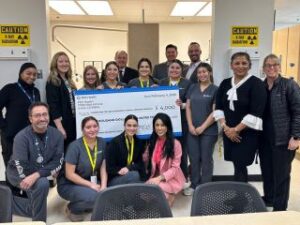 The popularity of community and walk-in clinics is growing throughout the U.S., and medical assistants are in demand to fill positions there. Many people that want to avoid long waits or high costs at traditional doctor’s offices are finding treatment at retail clinics and community-run locations. According to a poll conducted by Harris Interactive of more than 3,000 individuals, 27 percent of them had visited a retail walk-in or work-based clinic between 2011 and 2012, up from just 7 percent in 2008, and this percentage is expected to grow. 1 The trend for people to use these clinics for chronic conditions is also increasing. According to Nancy Finn, the author of “e-Patients Live Longer: The Complete Guide to Managing Health Care Using Technology,” the shortage of primary care physicians is only expected to increase as the Affordable Care Act is implemented, and by encouraging people to utilize the services offered at their local walk-in clinic, the needs of patients can be met. 2 Walk-in clinics can create electronic health records like hospitals and private doctors’ offices. Patients can request print outs or ask to have their information sent to a specialist or primary care provider, so if a local clinic is used as a backup on the weekends or after normal doctors’ office hours, they can update their primary clinician right away.
The popularity of community and walk-in clinics is growing throughout the U.S., and medical assistants are in demand to fill positions there. Many people that want to avoid long waits or high costs at traditional doctor’s offices are finding treatment at retail clinics and community-run locations. According to a poll conducted by Harris Interactive of more than 3,000 individuals, 27 percent of them had visited a retail walk-in or work-based clinic between 2011 and 2012, up from just 7 percent in 2008, and this percentage is expected to grow. 1 The trend for people to use these clinics for chronic conditions is also increasing. According to Nancy Finn, the author of “e-Patients Live Longer: The Complete Guide to Managing Health Care Using Technology,” the shortage of primary care physicians is only expected to increase as the Affordable Care Act is implemented, and by encouraging people to utilize the services offered at their local walk-in clinic, the needs of patients can be met. 2 Walk-in clinics can create electronic health records like hospitals and private doctors’ offices. Patients can request print outs or ask to have their information sent to a specialist or primary care provider, so if a local clinic is used as a backup on the weekends or after normal doctors’ office hours, they can update their primary clinician right away.
Retail clinics
Medical assistants and nurse practitioners typically staff retail clinics that are found in major retailers throughout the country like Target, Walgreens and Wal-Mart. They are responsible for minor health issues and while they are not meant to replace a relationship with a primary care provider, they are available to treat infections, joint sprains and minor wounds. Medical assistants at these clinics can also provide vaccinations and physicals, adding to walk-in clinics’ popularity, which is mainly due to their convenience and available hours.
Worksite clinics
The consulting firm Mercer conducted a survey of employers that offer worksite clinics and found that one-third of employers with more than 500 workers provide nearby or onsite health clinics for their employees. These locations usually offer the same types of services that retail clinics do: treatment for minor ailments, screenings and preventative tests. Employees can often be connected with a specialist with the help of the medical assistants at these worksite clinics if they have a chronic condition that needs attention. Many employers also provide discounts for care at these clinics, and prescriptions usually cost less there too. 2
Community clinics
For many people with low-income jobs, community clinics act as their primary care office, where they can receive health care, mental health and pharmaceutical services. Because they charge less than traditional doctors’ offices, community clinics are very popular. According to the U.S. Health Resources and Services Administration, there are more than 1,200 community health centers operating across the nation that receive federal money, and their staffs are comprised of medical assistants, nurse practitioners and pharmacy technicians. 3 For medical students, local health clinics are great places to serve the community and gain experience treating a variety of different ailments. Some student-run clinics also treat disadvantaged populations like the homeless, and can sometimes be found in nontraditional settings like churches. 4 There are more than 40 million uninsured residents in the U.S., and because they do not have a relationship with a primary care provider, minor issues can often be ignored until they result in costly visits to the hospital for necessary treatment. Medical assistants and nurses at local clinics fill that gap in access to health care for low-income individuals and have the ability to create lasting relationships with their patients, ensuring they will return. 1 “Popularity of ‘Walk-In’ Retail Health Clinics Keeps Growing: Poll,” Harris Interactive.com, Jan. 7, 2013, http://www.harrisinteractive.com/NewsRoom/PressReleases/tabid/446/mid/1506/articleId/1134/ctl/ReadCustom Default/Default.aspx 2 Zamosky, Lisa, “Walk-in clinics gaining popularity,” LATimes.com, June 14, 2013, http://articles.latimes.com/2013/jun/14/business/la-fi-healthcare-watch-20130616 3 “Find a Health Center Tool,” Find a Heath Center.hrsa.gov, http://findahealthcenter.hrsa.gov/help/ 4 Simpson, Scott A., & Long, Judith A., “Medical Student-Run Health Clinics: A Growing Trend in Community Activism and Medical Education,” Perelmen School of Medicine.edu, http://www.med.upenn.edu/studentrunclinics/documents/NationalSurveypdf_web.pdf



